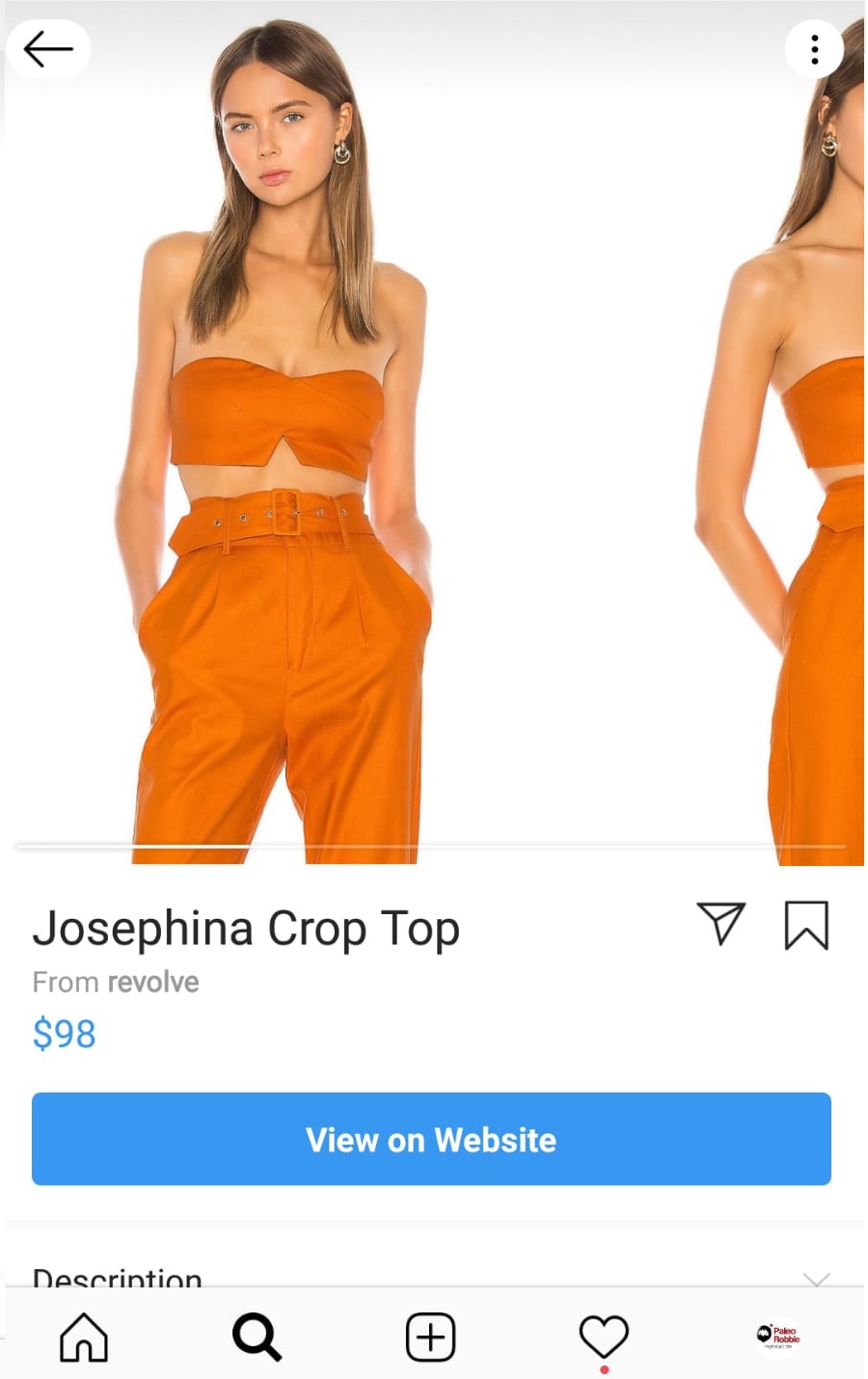Instagram has teamed up with a handful of Instagram influencers such as Kim Kardashian West and publishers like HypeBeast and HQ to tag branded products in their organic posts and Stories.
In this article I’ll explain how it works and what it means for influencer marketing going forward.
How creators tagging products work
Instagram is currently testing their new features with 50 creators (influencers) and five publishers.
Creators and publishers can tag up to five products from a single business or multiple businesses from a news feed post or story. At this moment in time, creators do not receive any commission based on the clicks or sales of any items from their posts.
Here’s an organic post from creator Camila Coelho, where she has tagged products from the company, Revolve:

Once a user clicks any of the tags, they are sent to the actual product from the business itself where they can learn more about the price, description, and sizes. They can even buy it directly on Instagram or visit the business’ website.
 Nowadays, it’s very important to comply with FTC regulations when working with influencers, and to let users know whether the mention was paid or organic. An Instagram spokesperson had this to say:
Nowadays, it’s very important to comply with FTC regulations when working with influencers, and to let users know whether the mention was paid or organic. An Instagram spokesperson had this to say:
“We believe transparency is important and we encourage everyone, including brands and creators, to follow industry best practices around transparency when content is sponsored or paid—and indicate it clearly.”
Instagram didn’t mention how long they are running this beta test for, but they hope to roll this feature out to more creators and publishers.
The bigger impact of this update
In the short term (6-12 months), I don’t think this new feature is going to change the way e-commerce businesses sell products on Instagram… just yet.
In the long term, I can see Instagram offering some sort of an affiliate-based system where users will receive a commission based on every sale they generate.
Imagine a world where your friends can tag a product they bought and receive a small fee if any of their followers went on to buy the same item. It would increase how often people posted and visited the platform.
Aside from fashion, make up, and beauty, most users turn first to either Google or Amazon when they are in search of something. By giving creators (and perhaps all users, eventually) the chance to tag the products they are using in their photos, it will certainly put Instagram up there as one of the first places consumers visit on their buying journey.
The process of seeing a product you like, clicking on it, and buying it directly off of Instagram is much smoother than having to visit a business’ website, enter your personal information and card details, and then receive daily newsletters and promotions.
Instagram is thinking long-term with this feature. They are giving creators more reasons to stay on the platform and post (potential commission in sales) and they are helping businesses reach new audiences.
One question that businesses will need to ask themselves in the coming years is how much control they want to give Facebook and Instagram in terms of driving sales, as neither will share too much information with the businesses.
Influencer marketing of the future
If you’ve done influencer marketing in the past, it can sometimes be a big headache to measure the results, issue voucher codes, and track how many people an influencer drove to your business.
Instagram is currently in the testing phase with this new feature, but I’m sure that in the future there will be a way for businesses to directly connect with creators on Instagram and strike up deals based on conversions.
This won’t be great news for influencer-based companies that bring businesses and influencers together as they will now be cut out. However, it will be more beneficial to creators and businesses as they’ll be able to strike better deals.